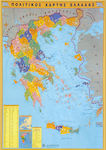Selected Store
Skroutz Buyers Protection
Set the delivery location to see products according to your choice.
 AustriaEnglish
AustriaEnglish BelgiumEnglish
BelgiumEnglish BulgariaБългарски
BulgariaБългарски CroatiaEnglish
CroatiaEnglish CyprusΕλληνικά
CyprusΕλληνικά CzechiaEnglish
CzechiaEnglish EstoniaEnglish
EstoniaEnglish FinlandEnglish
FinlandEnglish FranceEnglish
FranceEnglish GermanyDeutsch
GermanyDeutsch GreeceΕλληνικά
GreeceΕλληνικά HungaryEnglish
HungaryEnglish IrelandEnglish
IrelandEnglish ItalyEnglish
ItalyEnglish LatviaEnglish
LatviaEnglish LithuaniaEnglish
LithuaniaEnglish LuxembourgEnglish
LuxembourgEnglish MaltaEnglish
MaltaEnglish NetherlandsEnglish
NetherlandsEnglish PolandEnglish
PolandEnglish PortugalEnglish
PortugalEnglish RomaniaRomână
RomaniaRomână SlovakiaEnglish
SlovakiaEnglish SloveniaEnglish
SloveniaEnglish SpainEnglish
SpainEnglish SwedenEnglish
SwedenEnglish
© 20[0-9]{2} Skroutz SA All Rights and Lefts reserved. FAQ | Terms of use | Privacy Policy | Cookie Policy

Selected Store
Skroutz Buyers Protection



Hobbies & Leisure Books




Hobbies & Leisure Books




Hobbies & Leisure Books

Prices are calculated for:Germany, Other Payment Options
The new edition of Ampelography is coming 15 years and more after the writing of the first texts, enriched and updated, as required for a modern university textbook, but also for a reliable tool in the practice of productive viticulture. In the implementation of these basic directions, it incorporates the latest data of ampelographic, viticultural and oenological research both at the level of General Ampelography with the application of the new Ampelographic Description Code of the International Organization of Vine and Wine (CAP/OIV, 2009-2017), as well as within the framework of Special Ampelography with the addition of 24 new Greek and foreign grape varieties. In total, this volume presents 92 productive grape varieties (63 Greek and 29 foreign) and 14 grape varieties resistant to the root form of leafroll disease. Among the Greek varieties included are varieties (Mouchtaro, Mavrostyfo, Skopelitiko, Stavroto, etc.) that have attracted the special attention of Greek winemakers due to their very good productive and organoleptic characteristics, although they remained "forgotten" for many years and with question marks regarding their identity.
In this volume, in order to avoid further confusion regarding the nomenclature of Greek grape varieties, the names were retained as they appear in the National Catalogue, but with the addition of all the new data that emerged from a large number of related research studies at Greek and international level, aiming at the identification and distinction of Greek varieties through the method of ampelographic description, enzymatic polymorphisms (detected electrophoretically) and molecular markers (RAPDs, AFLP, SSR). The combination of these methods provides answers to the problems arising from the genetic diversity of the vinifera species, as expressed by the large number of varieties, biotypes/clones, variants and mutations, as well as the multitude of synonyms and homonyms for important Greek varieties.
Moreover, the preservation, after a comparative ampelographic study, of all the (true) synonyms of Greek grape varieties is imperative, as they constitute an important chapter of our viticultural tradition and folklore, as well as a special characteristic of the linguistic ability of Greek viticulturists. The first section of General Ampelography presents the methodology of ampelographic description, which is the basic tool of the science of Ampelography for the distinction and classification of species and grape varieties.
The original photos with a camera and a digital microscope accurately depict the differences (morphological, anatomical) of the individual ampelographic characteristics of the main organs of the vine and effectively contribute to the acquisition of "ampelographic memory".
The second section presents a complete ampelographic description, selection criteria, and cultivation properties of the vine varieties used for the establishment of productive vineyards in the post-drought viticulture, with all the latest research data, especially in the chapter on the interactions between rootstock and scion, which largely ensure harmonious productive coexistence and obviously the production of quality vineyard products. The third section includes the varieties (Greek and foreign) cultivated in the Greek vineyard for the production of wines, table grapes, and raisins.
For each variety, a) a complete ampelographic description is given, using the classical methodology and supplementary according to the updated Ampelographic Description Code of the OIV, b) data from comparative and experimental ampelography on intra- and inter-specific genetic diversity, c) data from the application of biochemical and molecular methods in Greece and other viticultural countries, regarding the origin, genealogy, and identity of the species and grape varieties, d) new (for the majority of varieties), original high-resolution digital photos of young shoots, mature leaves, and typical grape samples of the variety, e) indicative main phenological stages (date of budburst, full budburst, flowering, and ripening), and f) the physiological, productive, and cultivation properties (adaptation to edaphoclimatic environments in combination with suitable rootstocks, recommended training systems, winter pruning for fruiting, and green pruning, behavior against pathogens and grape enemies), as well as detailed information on the properties and technological characteristics of grapes and wine.
It is necessary to note that in very few cases there are differences in the ampelographic description of the varieties included in this volume compared to previous ampelographic studies, research, and publications, which are due either to the new criteria introduced by the OIV's Ampelographic Description Code or to the selection and description of different biotypes/clones. It is also worth noting once again the crucial role played in the distinction and identification of grape varieties, the selection, and labeling with modern methods of the medium typical sample of polyclonal varieties, regardless of the space (ampelographic collection or productive vineyard) where the ampelographic description is carried out.
A significant percentage of the existing confusion in the identity and nomenclature of Greek grape varieties, especially the "forgotten" ones, is due to related methodological issues. Finally, special effort was made in the
Specifications are collected from official manufacturer websites. Please verify the specifications before proceeding with your final purchase. If you notice any problem you can report it here.